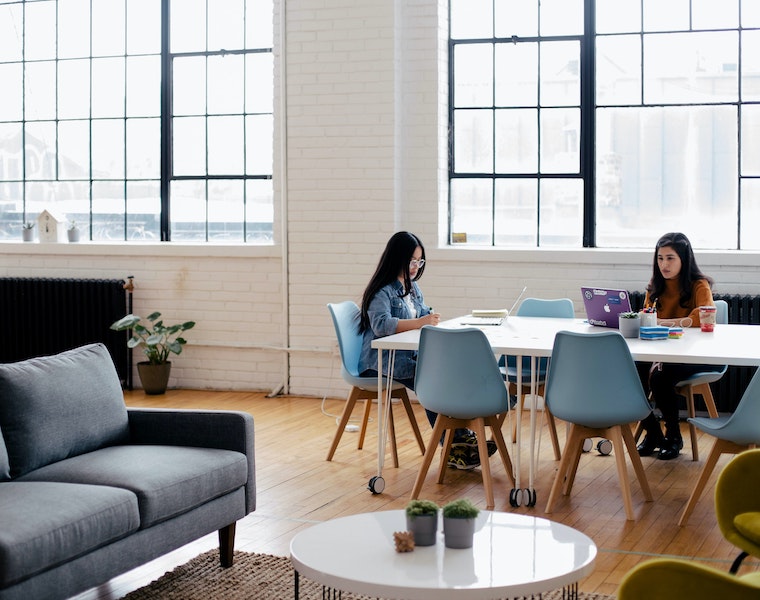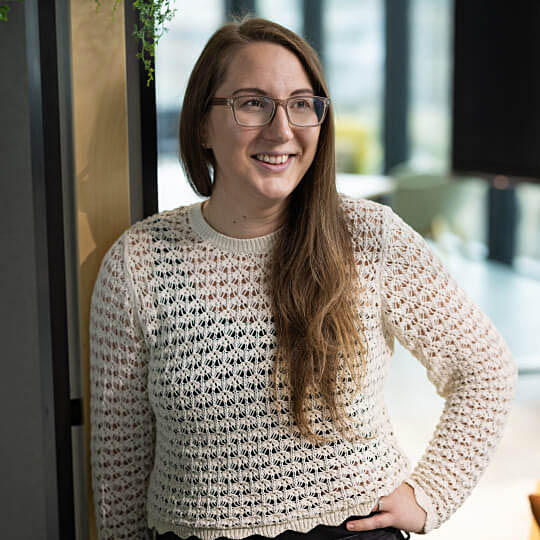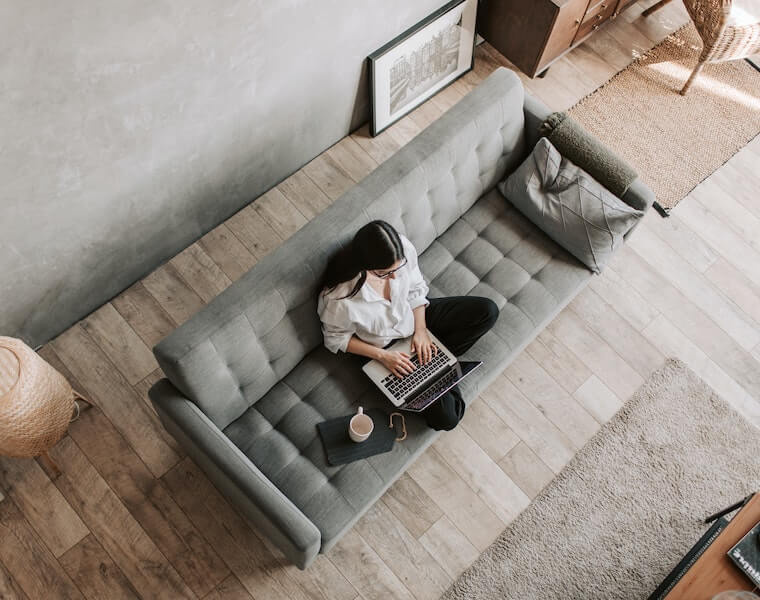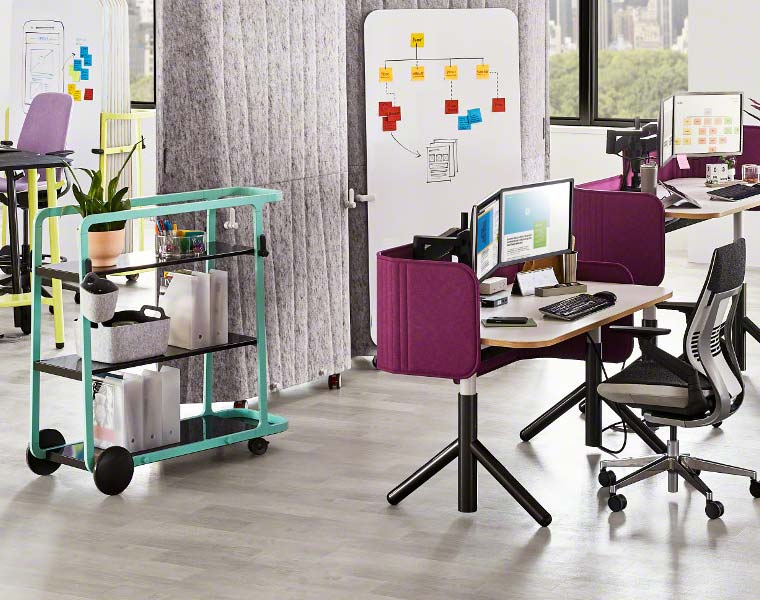One invariable that unites us all is that we all go to work to get a job done and get it done well. What divides us, though, is how we like to go about doing this. Some of us prefer to find a quiet spot and stick our headphones in, others prefer bouncing ideas off others in dynamic breakout sessions – and, of course, preferences can change from task to task.
The secret to success? An office design scheme that supports a diverse and multifaceted working environment, facilitating the spectrum of working styles and thinking behaviours found in the modern workforce.
A huge part of this is navigating how to design for both collaboration and concentration – a challenge more and more businesses are coming up against as employees become more nomadic and autonomous over where and how they work. Gone are the days of being tethered to an assigned desk and just making do.

Nurturing collaboration and concentration simultaneously isn’t an oxymoron and nor should these two modes of work be seen as mutually exclusive – they can and should coexist.
An effective, inspiring and engaging working environment will cater for both collaborative teamwork and individual concentration, paralleling the two as options for its inhabitants to move between according to task and requirement.
But how do you strike the balance? How do you make sure collaboration and concentration can both be fulfilled as part of the same design ecosystem and company culture? Keep scrolling for our advice.
Interior design to support collaborative work
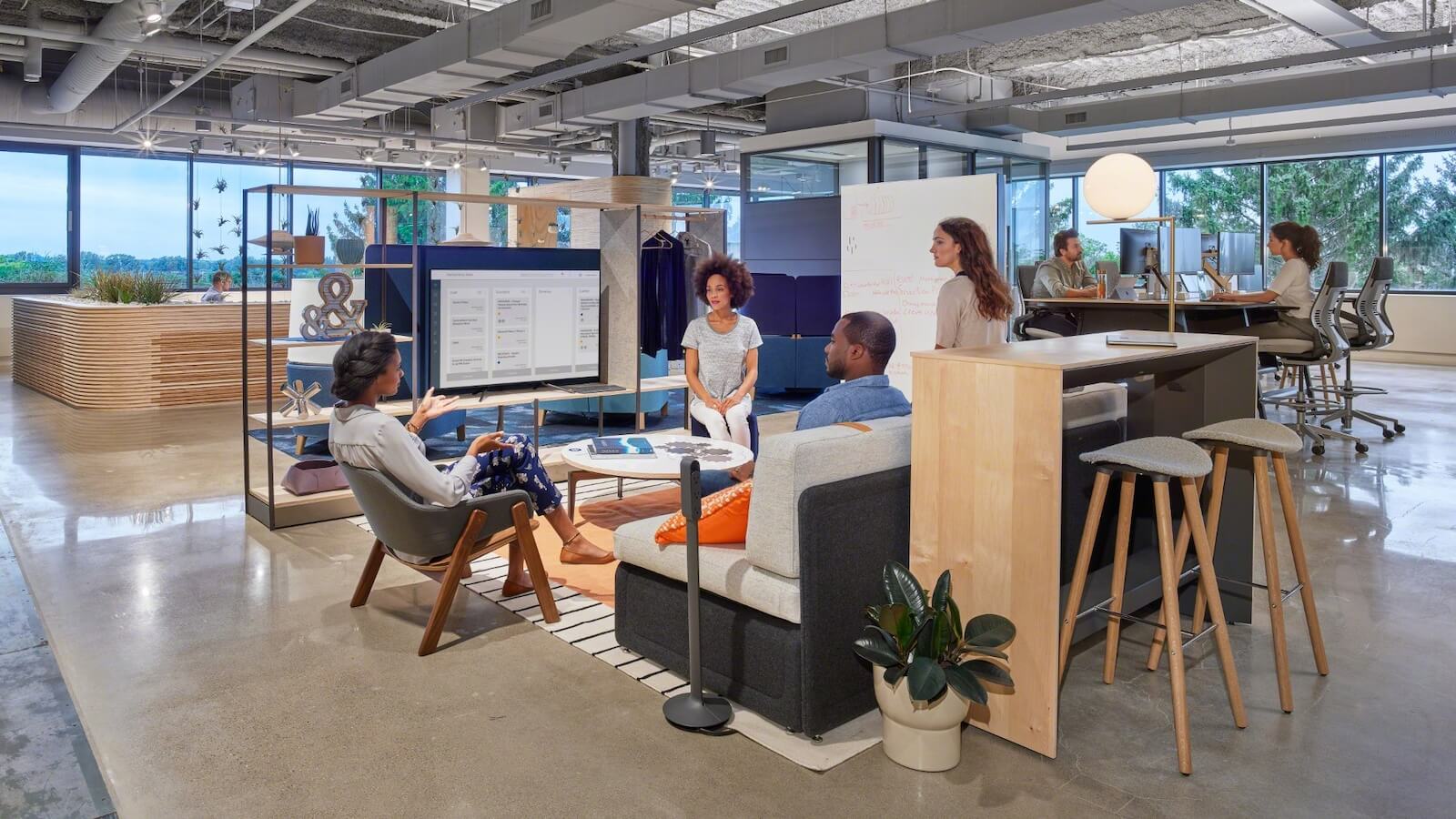
Briefing, debriefing, ideation, analysis, brainstorming and even socialisation – all commonplace parts of the working day and essential cogs in a well-oiled workforce. All of these things tend to be best executed as part of a team, when you can join forces, share opinions, meld approaches and use each employee as a building block to support more robust and well-rounded performance.
But here’s the thing: if you want your employees to work together and you want your teamwork to be streamlined, you need to cultivate a physical environment where this is encouraged and well facilitated.
Collaboration isn’t just about sharing a meeting room and sitting around a boardroom-style table, throwing some ideas on a flipchart. Sure, it can be that but collaboration is the cornerstone of modern teamwork and something which comes in all shapes and sizes. Therefore, your workspace configuration, furniture and technology need to reflect, accommodate and support this.

In order to best facilitate effective collaboration, we recommend a combination of microenvironments. Provide a variety of soft and hard furniture, varying levels of tech integration to support both digital and analogue work, and of course, video conferencing resources to encourage and include remote workers and freelancers.
For example: in one area of the office you might have a big, squishy sofa cultivating casual coworking, while in another, you might have a sit-stand table with stools and integrated media for more structured group sessions.
Design to facilitate focus and concentration
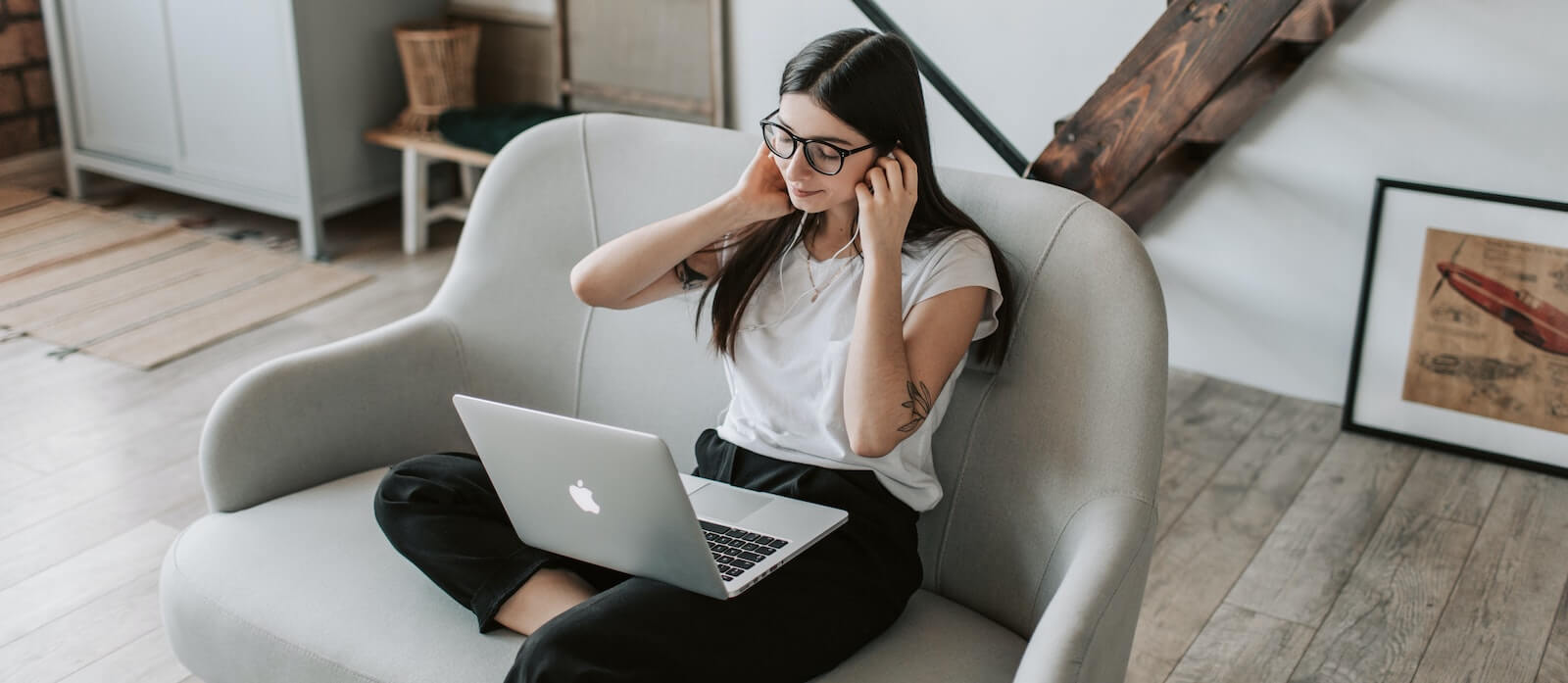
Yes, collaboration is key. Yes, communication is critical. Yes, teamwork is more dynamic and versatile than ever before. However, there’s still a huge (and vital) place for individual focus and solo work. So while you’re busy plotting out cutting-edge breakout zones and kitting out state-of-the-art collaboration spaces, don’t forget to leave ample room (and sufficient budget) for supporting concentration.
This area of the discussion is reminiscent of Steelcase’s research around ‘The Privacy Crisis‘ – a period of time where open-plan working and a focus on hyper-collaboration have caused neglect towards the need for privacy provision in the workplace.
Sometimes, to knuckle down and get a task over the line, you just need to escape to a semi-shielded breakout area or even a fully enclosed pod to concentrate and focus in silo. These types of workspaces should think more meticulously about optimising acoustics, reducing visual distraction and integrated power that enables users to sit and immerse themselves for hours at a time, uninterrupted, if needs be.
Why you need to strike the balance and find that sweet spot
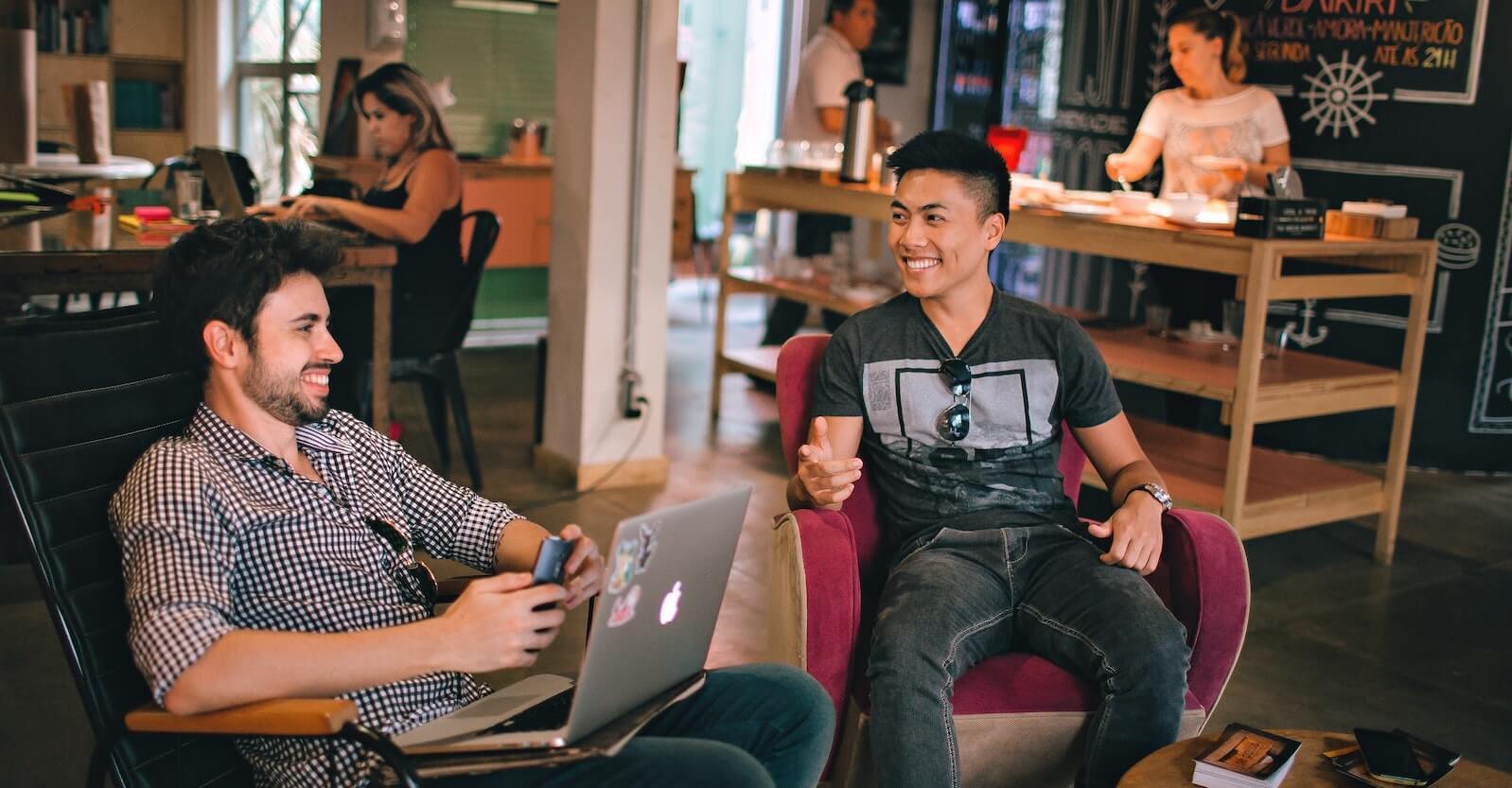
Okay, so we’ve established that striking a balance between designing for collaboration and designing for concentration is paramount – especially in the working world of today and tomorrow – but why? Well, aside from the obvious, when you dig beneath the surface, you unveil a whole array of advantages to taking this inclusive approach to workspace design and fit out.
The crux of the matter, however, comes down to fostering an inclusive and supportive working environment to match an equally accommodating company culture – all prerequisites to a happy, healthy workforce. Happy, healthy teams make for peak productivity, maximised motivation and a loyal body of retained employees who are committed to your business on both a macro and micro level.
